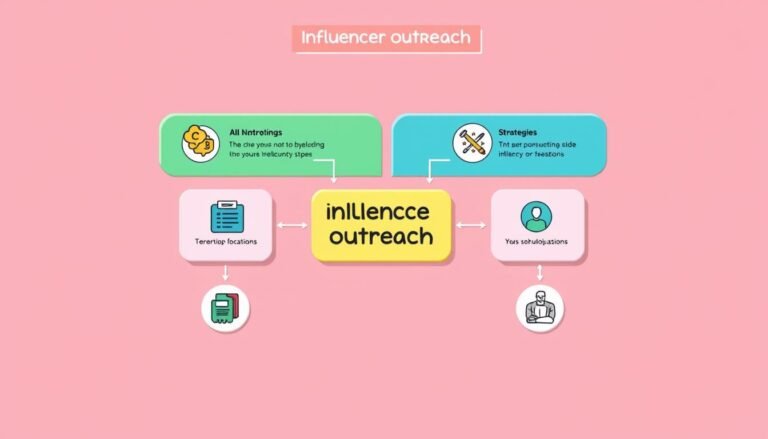How to Use Behavioral Data for Marketing
Did you know that 74% of marketers think behavioral data is key for targeting their audience? In today’s digital world, knowing how people act is crucial for making marketing work. With 65% of users liking personalized content more, using behavioral data is a must.
This article will show you how to use behavioral data in marketing. We’ll look at important techniques that boost your marketing results. By seeing how customers use digital tools—like page views and purchases—companies can make campaigns that really connect with people. We’ll also talk about how to collect, analyze, and use this data to get the most out of your marketing.
Key Takeaways
- Understanding the definition and significance of behavioral data in marketing.
- Identifying various sources and methods for collecting behavioral data.
- Utilizing behavioral segmentation to tailor marketing strategies.
- Analyzing key metrics to evaluate the effectiveness of campaigns.
- Enhancing customer engagement and retention through personalized offers.
Understanding Behavioral Data
Behavioral data gives us a lot of info on how people act online. It shows what they like and what they do. This is key for businesses to make their marketing better and make customers feel special. By using behavioral data, companies can boost their marketing and see more people engage and buy more.
What is Behavioral Data?
Behavioral data is all about the info we get from how people use websites, apps, and other online stuff. It covers things like what links they click, forms they fill out, and what they buy. By looking at this data, companies can learn a lot about what people like. This helps them make marketing that really speaks to their audience.
Types of Behavioral Data
There are three main kinds of behavioral data, each with its own perks for marketing:
- First-party data: This is the data companies get straight from their customers. It tells them a lot about what people do and like.
- Second-party data: This comes from working with other companies. It helps companies understand people who are similar to their customers.
- Third-party data: This is data from outside sources. It gives a big picture of the market, but might not be as specific to individual behaviors.
Importance of Behavioral Data in Marketing
Behavioral data is super important for marketing. It lets companies:
- Make marketing that really fits what people want.
- Find and fix things that make customers get stuck.
- Plan for the future by knowing how well their marketing works.
- Get people more involved with messages and deals that match their actions.
Companies like McDonald’s have seen big wins by using behavioral data well. For example, McDonald’s used Dynamic Yield to make customers happier and sell more. With numbers showing that using behavioral data can lead to 85% more sales growth and a 25% boost in profit, it’s clear this data is key in today’s market.
| Type of Data | Description | Use in Marketing |
|---|---|---|
| First-party data | Information collected directly from customers | Provides accurate insights into customer behavior |
| Second-party data | Data obtained through collaborative partnerships | Enhances understanding of similar customer segments |
| Third-party data | Aggregated data sourced externally | Useful for broad market analysis |
Collecting Behavioral Data
For businesses, collecting behavioral data is key to understanding what customers like and how to market better. This data comes from many places, like online interactions and direct talks with customers. Knowing where this data comes from helps make marketing stronger.
Sources of Behavioral Data
Businesses use many ways to get behavioral data. Here are some main sources:
- Websites: Tools and analytics track how users click and view pages.
- Mobile applications: Data shows how customers use apps and how engaged they are.
- CRM systems: These systems give info on what customers like and buy, helping in more personal talks.
- Social media platforms: These give insights into what customers are interested in and how they behave.
Methods for Data Collection
Businesses use different ways to collect this important data. Using the right tools helps get all the data needed and follow ethical rules.
- Use Google Analytics to see website traffic and how users behave.
- Use CRM software to track customer interactions and collect data automatically.
- Get feedback from surveys and feedback channels to learn directly from customers.
How to Use Behavioral Data for Marketing
Using behavioral data can make marketing strategies much better. It helps understand customers better and target them more effectively. By looking at what customers do, businesses can make campaigns that speak to them directly.
Behavioral Segmentation
Behavioral segmentation puts customers into groups based on their actions. This makes marketing more precise, making messages hit the mark better. Important details like what they buy and how they interact help spot who’s really interested.
Email marketing that uses this method can bring in 58% of all revenue. When marketers send targeted emails, they see a huge jump in revenue, up to 760% more.
Tailoring Marketing Strategies
Looking at behavioral data helps marketers make campaigns that really speak to people. For example, AI tools can quickly spot what drives customers to buy or use products. This way, businesses can focus on those who are truly interested, saving money and building loyalty.
A strategy based on this data doesn’t just get customers involved. It also builds strong relationships and boosts revenue over time.
Analyzing Behavioral Data
Learning how to analyze behavioral data can really boost marketing strategies. By focusing on key metrics, businesses can get valuable insights. These insights help make better decisions and improve how they talk to customers.
Key Metrics to Consider
When looking into behavioral data, some metrics are really important. They give a full picture of how customers interact and engage:
- Purchase Frequency: Shows how often customers buy things in a certain time.
- Engagement Time: Tracks how long users spend with content on different platforms.
- Bounce Rates: Tells the percentage of visitors who leave a site after seeing just one page.
- Scroll Depth: Looks at how far down a page users scroll, showing how engaged they are with content.
- Abandoned Carts: Shows how often users put items in their cart but don’t buy them.
Tools for Behavioral Data Analysis
Choosing the right tools is key for good behavioral data analysis. Here are some top picks that help marketers make the most of their data:
- Google Analytics: Gives a wide view of how users behave on websites and apps.
- Fullstory: Gives deep insights by showing what user patterns are hidden.
- Heatmap Tools: Makes it clear where users click and how they move through a site.
- Hightouch: Makes it easy to gather and analyze customer interactions across various platforms.
- Heap: Helps track events and analyze behavior with little setup.
Maximizing Marketing ROI with Behavioral Data
To boost marketing ROI, focus on making the customer journey better. Look at clicks, scrolls, and time on pages to find where users might get stuck. This helps marketers fix issues and make the journey smoother, leading to happier customers.
Enhancing Customer Journey
Behavioral data helps spot how users feel through their actions. By looking at these insights, companies can find ways to engage better. Making content personal to what users like can really up conversions. This makes each step in the journey better, leading to more repeat visits.
Identifying Engagement Opportunities
Marketers can find ways to engage users by looking at their buying habits and how they interact. For example, personalized emails and targeted ads can really grab users’ attention. By using behavioral data to fine-tune marketing, companies can see big improvements in their results.
Boosting Conversion Rates
Using behavioral data to make smart marketing moves is key to boosting ROI. Companies that use data well can get more people to convert and build a loyal customer base. By always using data to improve marketing, companies can grow and stay ahead in the market.
Source Links
- 6 Types of Behavioral Data That Can Be Used For Segmentation
- The Importance of Behavioral Data in Marketing | Lytics
- Making the Most of Behavioral Data in Your Marketing
- What is Behavioral Data & Why is it Important?
- What is behavioral data and how can it help you better understand your customers
- Understanding Behavioral Data: A Comprehensive Guide
- Behavioral Marketing: What Is It & How Is It Beneficial? [+ Examples]
- How Behavioral Data in Marketing can Boost your Online Store Sales
- Behavioral Analytics: Improving the Bottom Line – Qualtrics
- What is behavioral segmentation? A beginner’s guide
- Top Two Ways to Use Behavioral Data in Your Social Media Campaigns
- Behavioral Data Definition – Glossary – CDP.com
- What is Behavioral Data? The Complete Guide
- The Ultimate Guide to Behavioral Data
- Supercharge Your Marketing with Behavioral Analytics
- Elevate your marketing ROI with data-driven strategies
- Maximizing ROI With Data-Driven Campaigns for Digital Marketing








